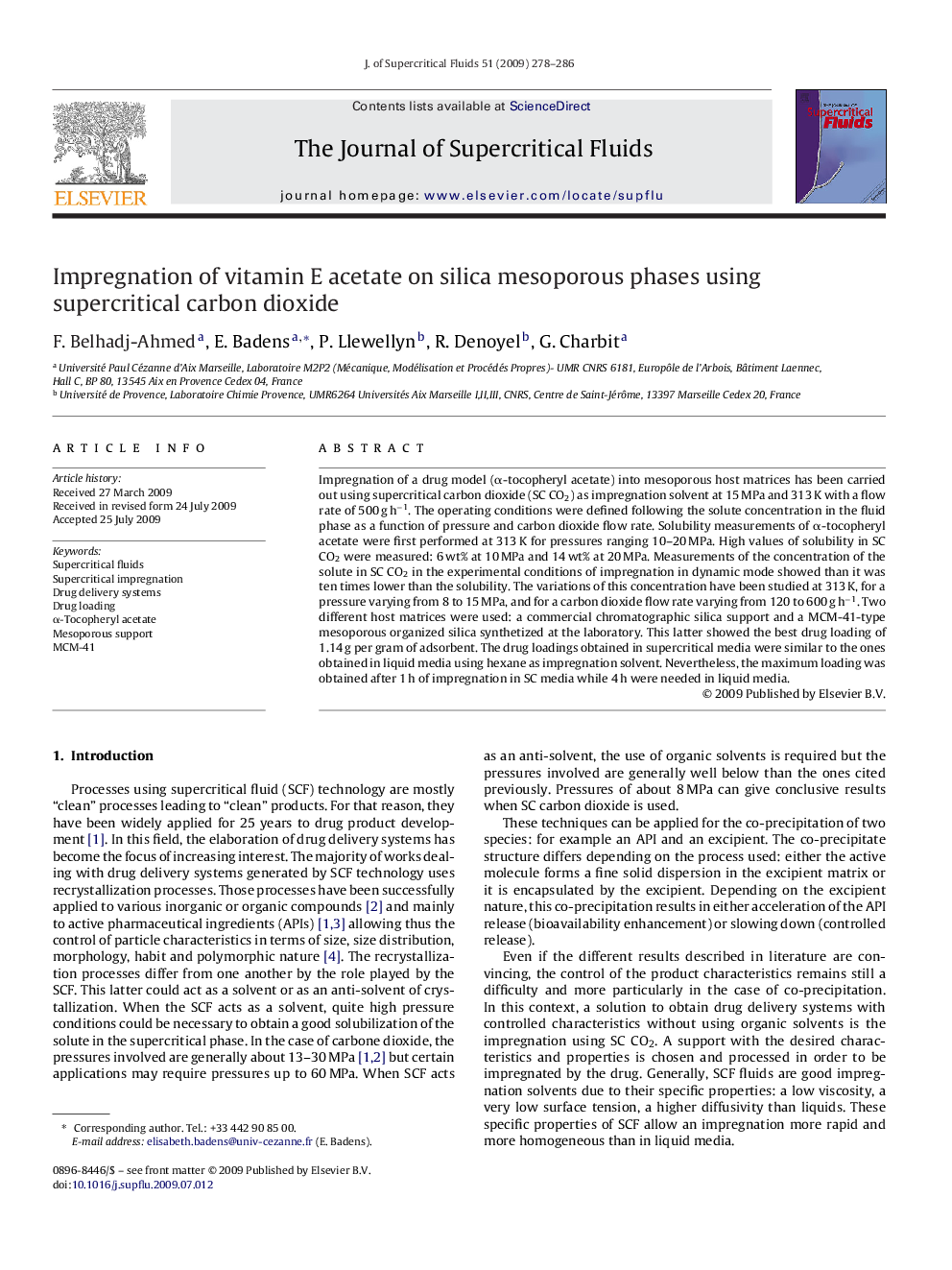| Article ID | Journal | Published Year | Pages | File Type |
|---|---|---|---|---|
| 231555 | The Journal of Supercritical Fluids | 2009 | 9 Pages |
Impregnation of a drug model (α-tocopheryl acetate) into mesoporous host matrices has been carried out using supercritical carbon dioxide (SC CO2) as impregnation solvent at 15 MPa and 313 K with a flow rate of 500 g h−1. The operating conditions were defined following the solute concentration in the fluid phase as a function of pressure and carbon dioxide flow rate. Solubility measurements of α-tocopheryl acetate were first performed at 313 K for pressures ranging 10–20 MPa. High values of solubility in SC CO2 were measured: 6 wt% at 10 MPa and 14 wt% at 20 MPa. Measurements of the concentration of the solute in SC CO2 in the experimental conditions of impregnation in dynamic mode showed than it was ten times lower than the solubility. The variations of this concentration have been studied at 313 K, for a pressure varying from 8 to 15 MPa, and for a carbon dioxide flow rate varying from 120 to 600 g h−1. Two different host matrices were used: a commercial chromatographic silica support and a MCM-41-type mesoporous organized silica synthetized at the laboratory. This latter showed the best drug loading of 1.14 g per gram of adsorbent. The drug loadings obtained in supercritical media were similar to the ones obtained in liquid media using hexane as impregnation solvent. Nevertheless, the maximum loading was obtained after 1 h of impregnation in SC media while 4 h were needed in liquid media.
Graphical abstractFigure optionsDownload full-size imageDownload as PowerPoint slide
